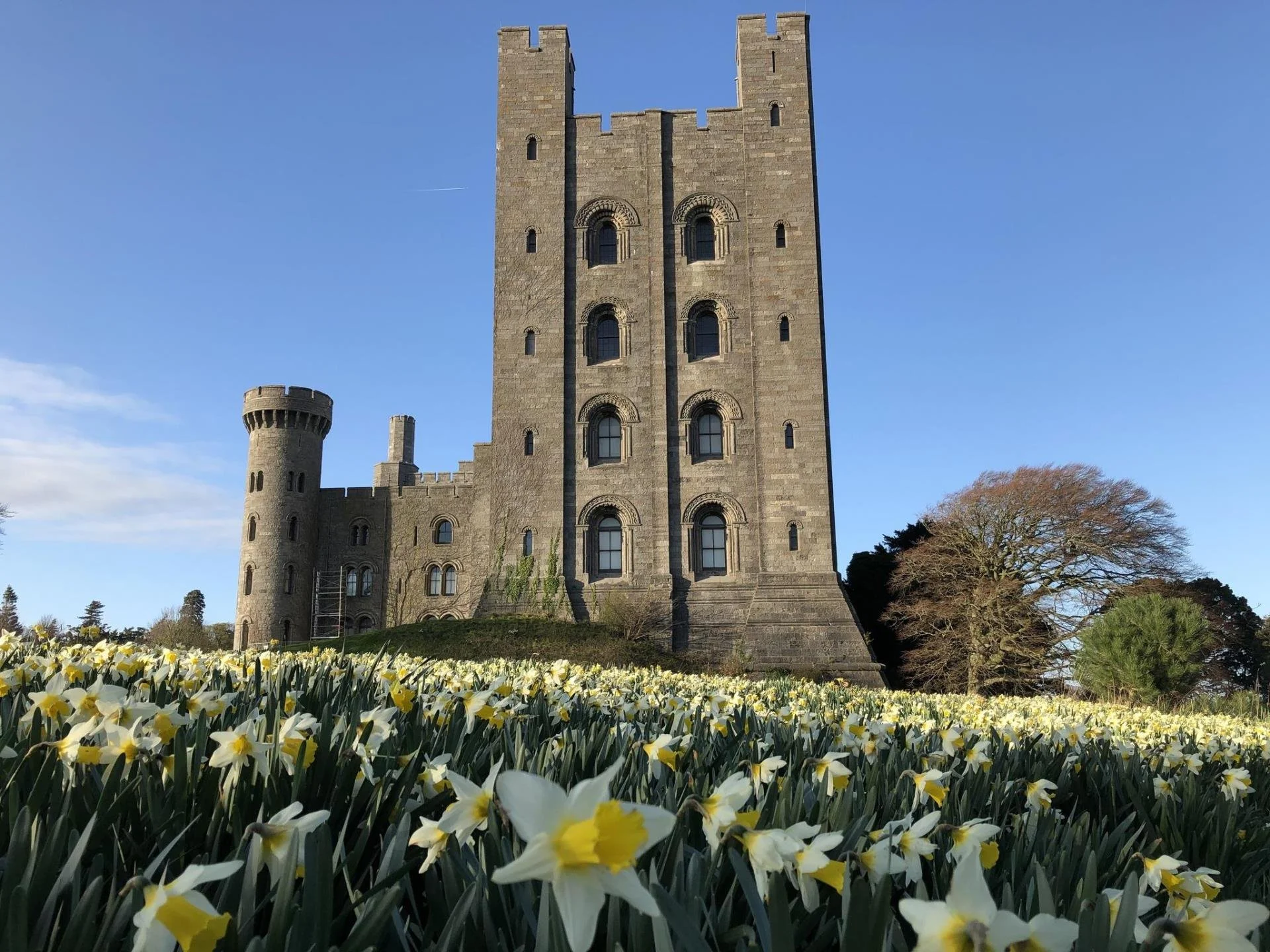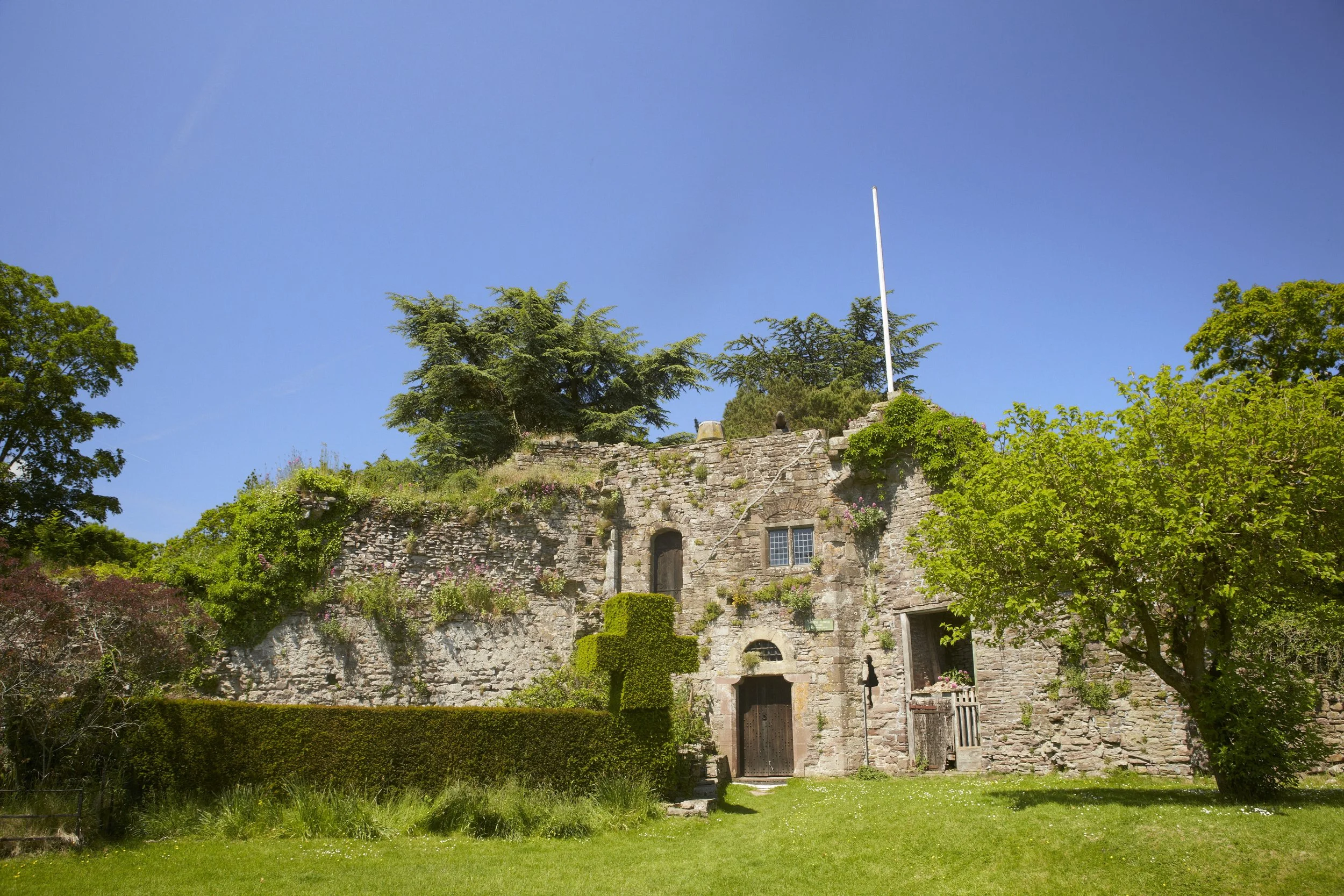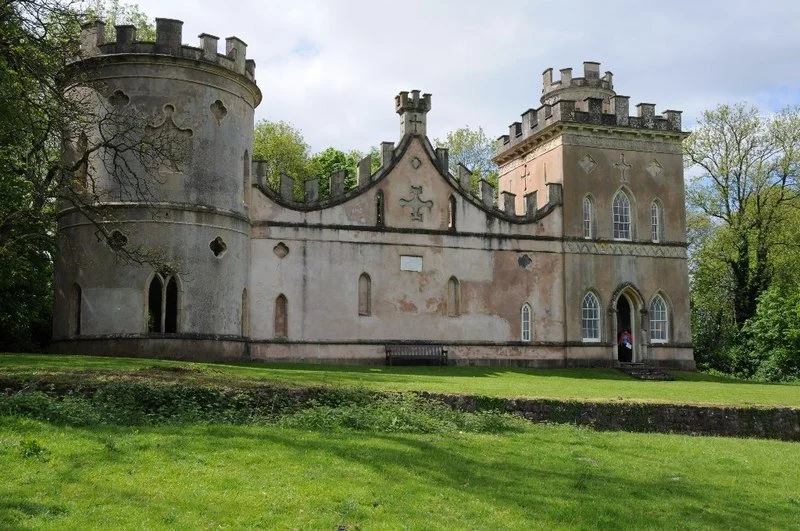Penrhyn Castle | Visit Amazing Welsh Castles
Penrhyn Castle is a 19th-century neo-Norman country house in Bangor, North Wales.
It was built on the site of a medieval fortified manor and the current structure was designed by architect Thomas Hopper for the wealthy Pennant family. The castle combines lavish Gothic interiors with the appearance of a Norman fortress. It overlooks the Menai Strait and offers views of the Snowdonia mountains.
Today, it is managed by the National Trust. It is open to visitors and houses collections of art, historic furnishings, and industrial heritage exhibits related to the Penrhyn Quarry and the local railway.
Quick Facts
Built: 1820–1837
Type: Neo-Norman country house
Location: Bangor, Gwynedd, North Wales
Architect: Thomas Hopper
Commissioned by: George Hay Dawkins-Pennant
Managed by: National Trust
Construction material: Anglesey limestone
Original site: Medieval fortified manor house
Notable features: Grand staircase, slate industrial exhibitions, extensive art collection
Entry status: Paid admission
Dog policy: Dogs allowed in gardens (on leads); not inside the castle
Heritage status: Grade I listed building
Brief History
The current castle was built between 1820 and 1837. George Hay Dawkins-Pennant, who inherited wealth from sugar plantations in Jamaica, commissioned the project. He employed architect Thomas Hopper to design a lavish country house styled as a Norman castle. The design was intended to symbolise power and wealth rather than for defensive purposes.
The structure replaced an earlier fortified manor house, originally established by a prominent Welsh family. This medieval building had passed through several prominent Welsh families, including the Griffiths and the Penrhyns.
During the 19th century, the Pennant family gained further wealth from the Penrhyn Slate Quarry, one of the largest in the world. Profits from slate and Caribbean plantations funded the elaborate interiors and extensive estate grounds.
In 1951, the Pennant family gave the castle to the state in lieu of death duties. It has since been managed by the National Trust. The Trust has made efforts to present a fuller picture of the estate’s links to slavery and industrial history.
Features and Layout
The castle was designed to resemble a medieval fortress, but it is in fact a 19th-century country house. Architect Thomas Hopper incorporated thick walls, battlements, towers, and arrow loops into the exterior. The building is constructed from local limestone and features a large keep-style tower at its core.
Inside, the castle contains elaborate interiors styled in neo-Norman fashion. Carved stone arches, vaulted ceilings, and intricate plasterwork dominate the entrance hall and stairwell. Hopper also designed custom furniture and fittings, many of which remain in place.
The castle houses a significant art collection, including works by Historic Old Masters, including Flemish and Dutch paintings such as Bouts, and others in the collection. The library, drawing room, and dining room each display period furnishings and extensive decorative detailing.
A separate section of the castle is dedicated to industrial history. It includes exhibits on the Penrhyn Quarry and the narrow-gauge Penrhyn Railway. Tools, photographs, and models illustrate the slate industry’s impact on the region.
The surrounding grounds include formal gardens, woodland paths, and views across the Menai Strait to Anglesey.
Did You Know?
The castle’s grand staircase was designed to be self-supporting. Its cantilevered steps are anchored only at the wall, with no support beneath.
Images




Legends and Stories
Although it is a relatively modern construction, several stories have become associated with its grounds and history.
One often-cited legend involves ghost sightings in the castle. Some visitors and staff have reported strange sounds, cold spots, and unexplained movements within the corridors. These claims are usually tied to the medieval foundations or the castle's former role in the local slate industry.
Another story concerns the long-standing tension between the Pennant family and the quarry workers. In 1900, over 2,800 workers at Penrhyn Quarry went on strike over low wages and poor conditions. This became one of the longest industrial disputes in British history. The castle came to symbolise wealth built on exploitation, and that legacy remains a central part of the National Trust’s interpretation today.
Visiting
You can confirm the details below from the National Trust and visitor sources.
Opening times and entry
The castle is open daily from 10:00 to 16:00 during the main season (1 March to 3 November).
Admission prices are approximately £14 for adults; younger children may be free or discounted—check the National Trust website for up‑to‑date pricing.
Facilities
Free parking in a surface car park at the Visitor Welcome Centre.
Accessible toilets, baby‑changing, shop, café and kiosk near the car park and castle.
Castle Café open daily 10:30 to 15:30, serving hot and cold drinks, light meals and cakes, with indoor and outdoor seating.
Dog policy
General garden access is dog‑friendly. Dogs on short leads are welcome in gardens, estate grounds, the café and visitor reception. Only assistance dogs are allowed inside the castle.
Directions
Located in Llandygai, near Bangor, Gwynedd, postcode LL57 4HN.
Reachable by road via the A55 and A5, with clear signage. Bangor railway station lies about 3 miles away; bus services serve the castle driveway with a short walk to the entrance.
Accessibility
Paths are a mix of gravel and paved surfaces with slight inclines and steps. Mobility scooters, manual wheelchairs and golf buggy assistance are available. Quiet areas, sensory tools, ear defenders and induction loops are offered on request.
Visitor detail
Some tour guides have noted graffiti or wear on staircases from heavy historic footfall in the Grand Staircase area, reflecting centuries of use.
Nearby Attractions
Several local sites offer appealing extensions to a visit to this castle:
Garth Pier, Bangor
A Grade II listed Victorian pier extending over the Menai Strait. It offers sea views and host cafés and shops. Originally opened in 1896 by Baron Penrhyn, it remains a historic highlight.
Bangor Cathedral
Founded around the 6th century, this cathedral remains in use and hosts music recitals and exhibitions. It lies about 1.4 miles from the castle.
STORIEL (Gwynedd Museum & Art Gallery) & Pontio Arts and Innovation Centre
Located about 1.4–1.5 miles away, ideal for local history exhibits, cinema, theatre and live events.
Zip World Penrhyn Quarry
Around 4 miles away, offering outdoor adventures like zip lines and quarry tours, situated in the historic slate quarry that shaped the estate’s wealth.
Spinnies Aberogwen Nature Reserve
A small coastal wetland reserve close to the castle. Free to visit, it is ideal for birdwatching and observing estuarine wildlife.
Visitor Tips
Arrive early to explore both the castle and garden before peak times
Follow the colour-coded trails around the estate for nature walks and scenic viewpoints
Backpacks are restricted inside the castle; lockers available near the entrance
Dogs welcome in most outdoor areas but must be on short leads
Photography allowed inside but no tripods or flash
Public transport stops at the main road; expect a 10–15 minute walk to the castle
Pre-book mobility aids or call ahead if you need buggy transport from the car park
Bring your own food if you want to picnic—seating is available near the car park and in the woodland
Free entry for National Trust members (bring card or digital proof)
FAQs
-
Most visitors spend 2–3 hours exploring the castle, art collections, gardens, and industrial exhibitions. Add more time for walks or café visits.
-
Yes. Buses from Bangor stop near the castle entrance drive. From there, it's a short walk to the Visitor Centre. Bangor railway station is also nearby.
-
Yes. Picnics are allowed in designated areas. There are benches and open spaces near the car park and gardens. The café also sells light meals and drinks.
-
No. Only assistance dogs may enter the castle itself. Other dogs are welcome in the gardens and grounds if kept on a short lead.
-
Yes. Children can explore indoor rooms, run in outdoor spaces, and enjoy family trails. Facilities include baby changing and accessible toilets.
Wrapping it Up
This castle is a rare example of neo-Norman architecture in Wales. Although it was built in the 19th century, it draws on medieval design and symbolism. Its art collections, grand interiors, and industrial exhibits reflect the Pennant family’s wealth and influence. Today, the National Trust presents the castle with added context about its links to slavery and the slate industry. With its extensive gardens and educational displays, it offers a detailed view of North Wales’s social and architectural history.
Sources
National Trust
Provided official details on opening times, ticket prices, accessibility, café, dog policy, and site layout.
https://www.nationaltrust.org.uk/visit/wales/penrhyn-castle-and-garden
Wikipedia
Gave historical background on the construction period, architect, original manor site, and industrial heritage.
https://en.wikipedia.org/wiki/Penrhyn_Castle
Visit Snowdonia
Used to identify nearby attractions, including the quarry zipline and cultural venues.
https://www.visitsnowdonia.info/penrhyn-castle
National Trust Access Guide PDF (2024)
Used for visitor accessibility support and facilities.
https://nt.global.ssl.fastly.net/binaries/content/assets/website/national/regions/wales/places/penrhyn-castle-and-garden/pdf/penrhyn-access-statement-2020-final-feb-2024.pdf
SuperGardens
Provided supporting information on ticket pricing and garden features.
https://supergardens.co.uk/gardens/penrhyn-castle-and-garden/




Cardiff Castle is a medieval and Victorian-era site in the centre of Cardiff, the capital of Wales.